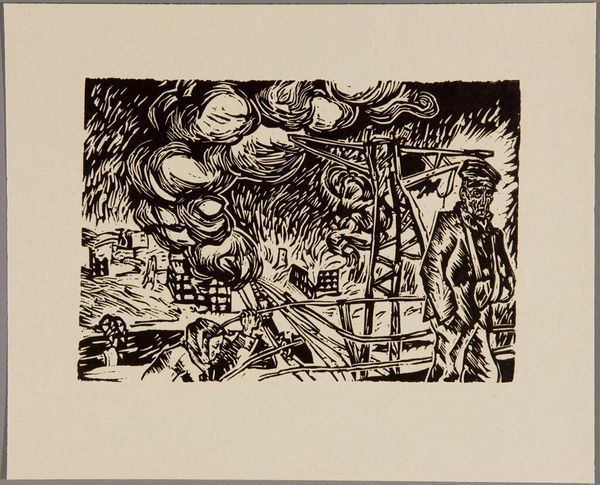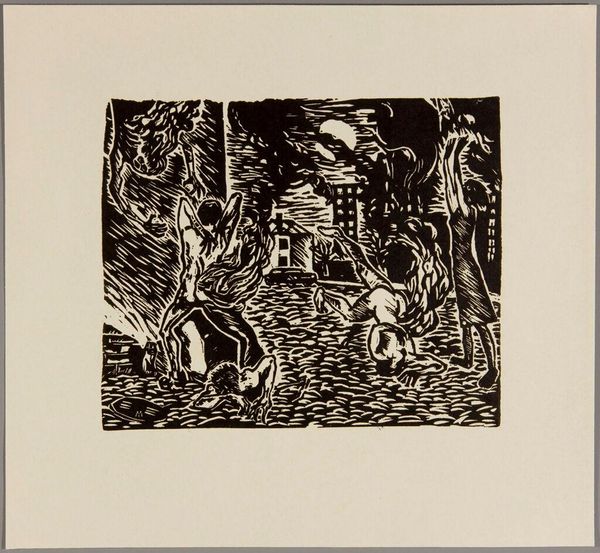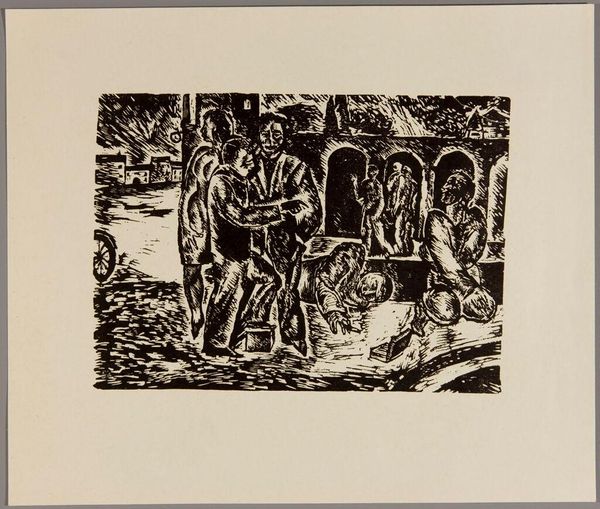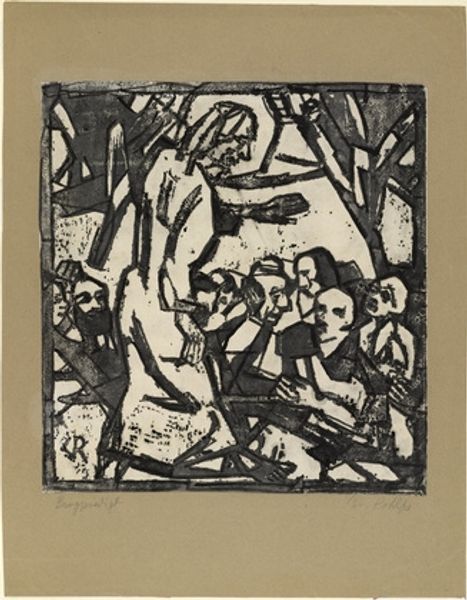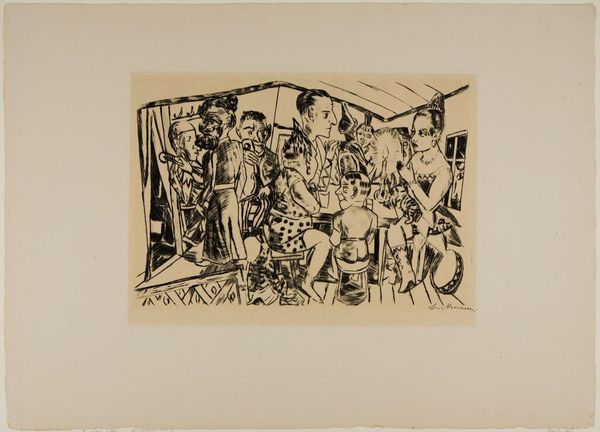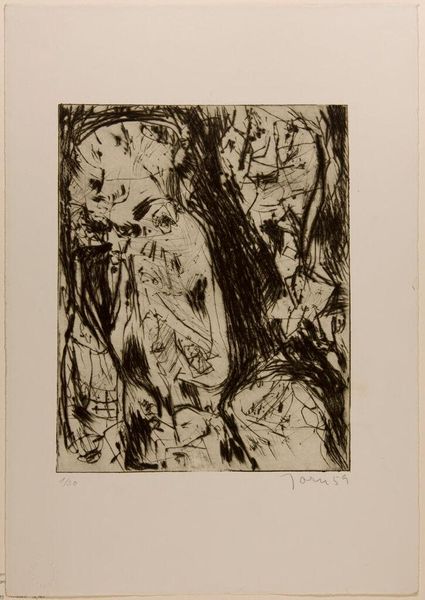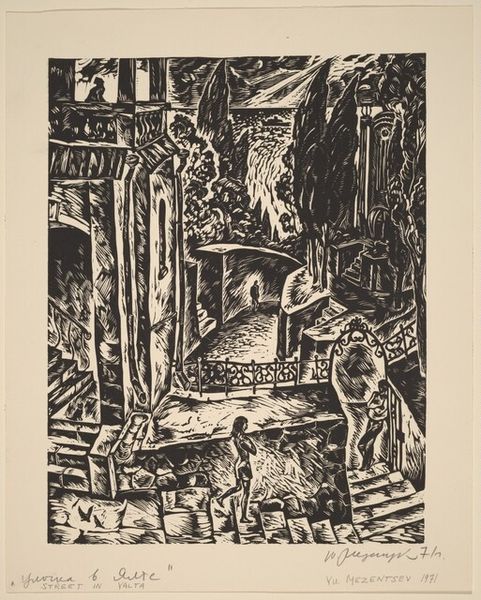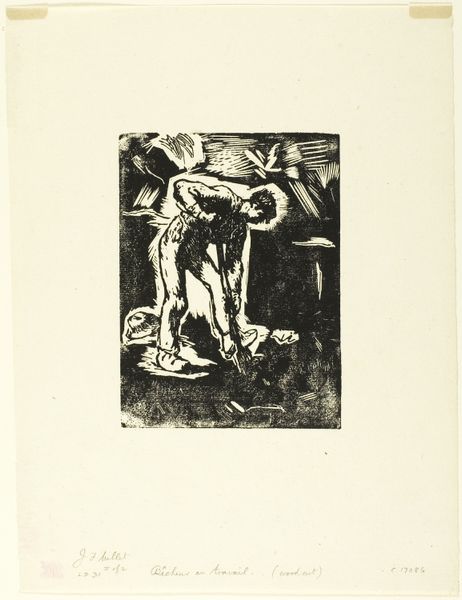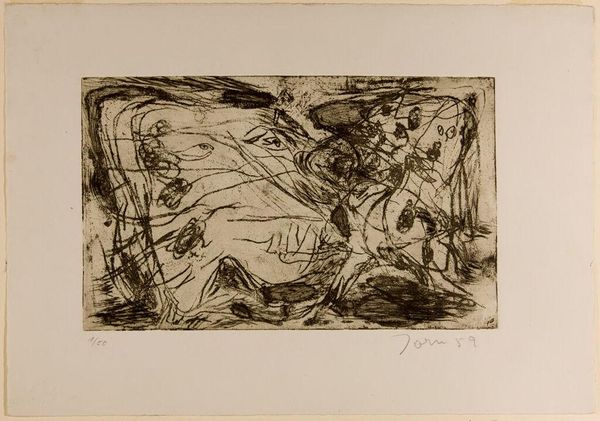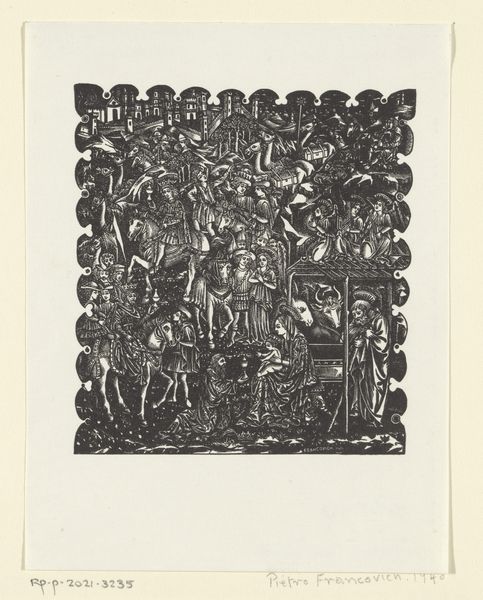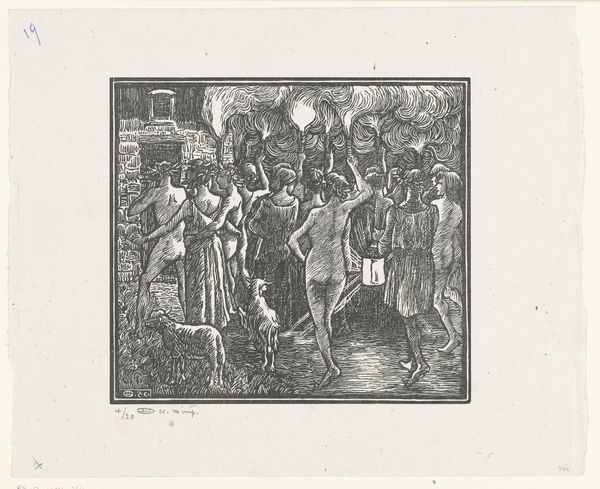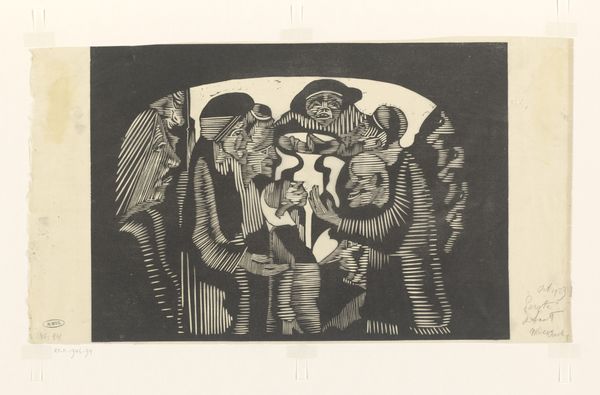
Copyright: CC0 1.0
Curator: W. Mezentseva’s stark woodcut print, simply titled "The Dead," presents us with a striking composition. What catches your eye first? Editor: The bold contrast of black and white creates an immediate sense of drama. The composition, divided into distinct panels, disrupts any sense of unified space, making it feel fractured. Curator: Indeed. The stark figures, almost silhouettes, evoke ancient Greek funerary steles, recalling a visual language for mourning and remembrance across cultures. The panels suggest separate moments or realms, perhaps life and afterlife. Editor: The rough texture from the woodcut technique emphasizes the starkness. Look at the expressive distortion of the figures—they are not idealized, but raw, conveying intense emotion. Curator: That rawness speaks to the universality of death, a shared human experience transcending time. The artist harnesses the power of symbolism to access deep-seated cultural anxieties and beliefs. Editor: By isolating forms and maximizing contrast, Mezentseva forces us to confront fundamental aspects of human existence, stripped bare of embellishment. Curator: It's a powerful testament to how art can explore our collective unconscious. Editor: Yes, the intensity of its composition lingers, prompting reflection on mortality and the visual language we use to process it.
Comments
No comments
Be the first to comment and join the conversation on the ultimate creative platform.
